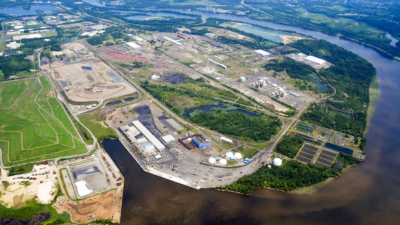This article was authored by the team of Tom Golarz and his brother Mike Golarz. They focus on the sale, lease and purchase of warehouse, manufacturing/production, distribution and flex buildings in Eastern Pennsylvania. Contact them at: tom.golarz@colliers.com, michael.golarz@colliers.com.
Industrial real estate vacancy rates are hovering near all-time lows, at 5% nationally as of Q2 2018. With the industrial market this tight, simple supply and demand principles are causing lease and sale prices to rise and actual available inventory to shrink. These fundamentals make new construction a viable option for many U.S. businesses looking to grow and expand, specifically design-build construction.
First, what is design-build and why does it matter? According to the Design-Build Institute of America (DBIA), it’s the fastest growing and most popular method used to deliver construction projects in America. Over the past 10 years, design-build has grown to represent nearly half of American construction projects, with growth projected to rise 18% by 2021. Design-build project delivery differs from traditional project delivery in the sense that it uses a single-source system, optimizing collaboration between the owner and one design-build entity. In traditional project delivery, the owner instead has two separate contracts with the designer and contractor, often making communication and delivery less efficient. When implemented correctly, the design-build process can create lower unit costs and faster delivery speeds.
The design-build process can be broken down into the below five (5) steps:
Step 1: Establish Project Parameters and Engage Experts
In the beginning stages of a design-build project, it’s critical to establish agreed upon parameters. These parameters include overall project budget, desired geography, critical employee retention, desired timing of occupancy and overall building specifications. Additionally, just as with any other important business venture, it’s crucial to engage experts for this project and form your team to help guide the process.
Step 2: Project Kick-Off
A design-build undertaking can be daunting at first. Once you have established your desired parameters and engaged experts, a project kick-off meeting is recommended in order to get started off on the right foot. This meeting should be attended by your entire team and should include a potential builder, attorney, civil engineer and a broker that specializes in industrial real estate. While there are numerous aspects to a design-build project, having your team fully engaged is a necessary initial step in the process.
Step 3: Site Selection
Once your team has met with all important parties, it is time to select a site. For industrial use, we recommend a site that is already zoned as industrial. However, if a non-industrial site is found and the location is perfect, rezoning may also be an option. Many factors are important when selecting land for development — existing zoning, availability of utilities, building coverage and impervious coverage ratios, topography, neighbors and required on-site and off-site improvements. This step in the process normally takes about 2-3 months.
Step 4: Approvals
Once a suitable land site has been selected, a purchase and sale agreement is negotiated/executed and the land is put under agreement. The purchase and sale agreement will allow your team to perform due diligence in order to confirm the land is suitable to develop your desired building. At this point, a builder for the project is fully engaged on your behalf in order to assist in geotechnical studies, wetland surveys, engineering and construction drawings, and to obtain entitlements/approvals for construction of your new facility. Your builder will supply you with bi-weekly status updates throughout the duration of the entitlement process. This step in the process can be expected to take approximately 9-12 months.
Step 5: Construction
Upon receiving full and un-appealable entitlements, the site is now ready for construction. Ideally, it is best to begin earthwork between April and September and weather permitting, construction can begin immediately. Your builder will supply you with bi-weekly status updates throughout the duration of the construction process, which can be expected to take 6-8 months.
In the end, the total design-build process of a new facility can be expected to take approximately 18-24 months. There are many important details within each step and working with a team of professionals can help keep the project on schedule and within budget. Embarking on a new construction undertaking can appear daunting, but with the right preparations, design-build might be the best choice for your next industrial location.

 Tom Golarz
Tom Golarz
 Craig Hurvitz
Craig Hurvitz
 Lauren Pace
Lauren Pace Ronna Larsen
Ronna Larsen
 Michael Golarz
Michael Golarz